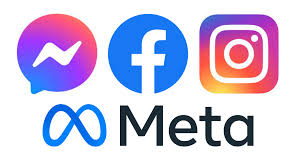INTRODUCTION
What Are Meta Ads?
Meta Ads refer to the advertising platform used to run paid ads across Meta-owned platforms, including Facebook, Instagram, Messenger, and the Audience Network. Formerly known as Facebook Ads Manager, Meta Ads Manager allows businesses and marketers to create, manage, and optimize ad campaigns with powerful targeting tools and performance analytics.
In 2025, running ads through Meta Ads remains one of the most cost-effective and measurable ways to reach targeted audiences, promote products, and drive conversions.
This step-by-step guide will show you exactly how to run ads on Facebook Meta Ads in 2025, with practical tips at every stage.
Step 1: Set Up a Meta Business Account
Before running ads, you need a Meta Business Manager account to manage your ad assets securely.
How to do it:
- Visit business.meta.com.
- Click “Create Account” and log in with your Facebook profile.
- Enter your business name, email, and business details.
- Set up your Business Page and Ad Account inside the dashboard.
Tip: Use a business email and verified business info to avoid account issues later.
Step 2: Install the Meta Pixel (Now Meta Pixel & Conversions API)
The Meta Pixel helps track user activity on your website for retargeting and conversion tracking.
How to do it:
- Go to Events Manager in Business Manager.
- Click “Add Event Source” and choose Meta Pixel.
- Name your pixel and enter your website URL.
- Copy the Pixel code and install it on your site header, or use platforms like Shopify or WordPress with easy plugins.
- Set up Conversions API for more reliable tracking (important in 2025 with privacy restrictions).
Step 3: Define Your Campaign Objective
Meta Ads are goal-driven. Choose the right campaign objective to guide your targeting, ad placements, and bidding strategy.
Available Objectives in 2025:
- Awareness (brand awareness, reach)
- Traffic (website, app, Messenger)
- Engagement (likes, comments, shares, messages)
- Leads (lead forms, phone calls, sign-ups)
- Sales (website purchases, catalog sales)
Tip: Choose “Sales” or “Leads” if you’re looking for direct ROI.
Step 4: Set Your Campaign Budget & Schedule
You can choose a daily budget (spend per day) or lifetime budget (spend over time).
How to do it:
- In Ads Manager, select Campaign Budget Optimization (CBO) or turn it off if you want to control budgets by ad set.
- Set your daily or lifetime budget.
- Choose a start and end date or let it run continuously.
Tip: Start with a test budget of $5–$20/day and scale based on performance.
Step 5: Define Your Target Audience
This is where Meta Ads shine. You can define exactly who sees your ads.
Options include:
- Custom Audiences: Upload your email list or use website visitors.
- Lookalike Audiences: Target people similar to your best customers.
- Detailed Targeting: Choose demographics, interests, behaviors, location, age, and more.
Tip: Use Lookalike + Interest targeting for high-converting cold traffic.
Step 6: Choose Your Ad Placements
Let Meta decide automatically (Advantage+ Placements) or choose manually.
Placement options:
- Facebook News Feed
- Instagram Feed
- Facebook and Instagram Stories
- Messenger Inbox
- Audience Network (off-site apps and websites)
Tip: For beginners, start with Automatic Placements. Test manual later.
Step 7: Create Your Ad
Your ad is what people will see. Use a strong creative and compelling copy.
Ad formats:
- Image ads
- Video ads
- Carousel ads
- Collection ads
- Reels ads (New in 2025)
Elements to include:
- Headline
- Primary text
- Call-to-action (Shop Now, Learn More, Sign Up)
- Destination URL (landing page, product page, lead form)
Best Practices:
- Keep text concise and benefit-driven.
- Use high-quality visuals.
- A/B test different creatives.
Step 8: Track, Test, and Optimize
Once your ad is live, the work isn’t done. You need to track performance and optimize for results.
Metrics to monitor:
- CTR (Click-Through Rate)
- CPC (Cost per Click)
- ROAS (Return on Ad Spend)
- Conversion Rate
- Frequency
Optimization Tips:
- Turn off underperforming ads after 3–5 days.
- Test different audiences and creatives.
- Use Meta’s A/B Testing tool.
- Adjust budget to top performers.
Final Thoughts
Running Facebook Meta Ads in 2025 is a powerful way to grow your brand, generate leads, and increase sales. The platform may evolve, but the fundamentals remain: understand your audience, create compelling ads, and optimize based on data.
Start small, test often, and scale what works. With this step-by-step guide, you’re now equipped to launch and manage effective Meta Ads campaigns that deliver real business results.

